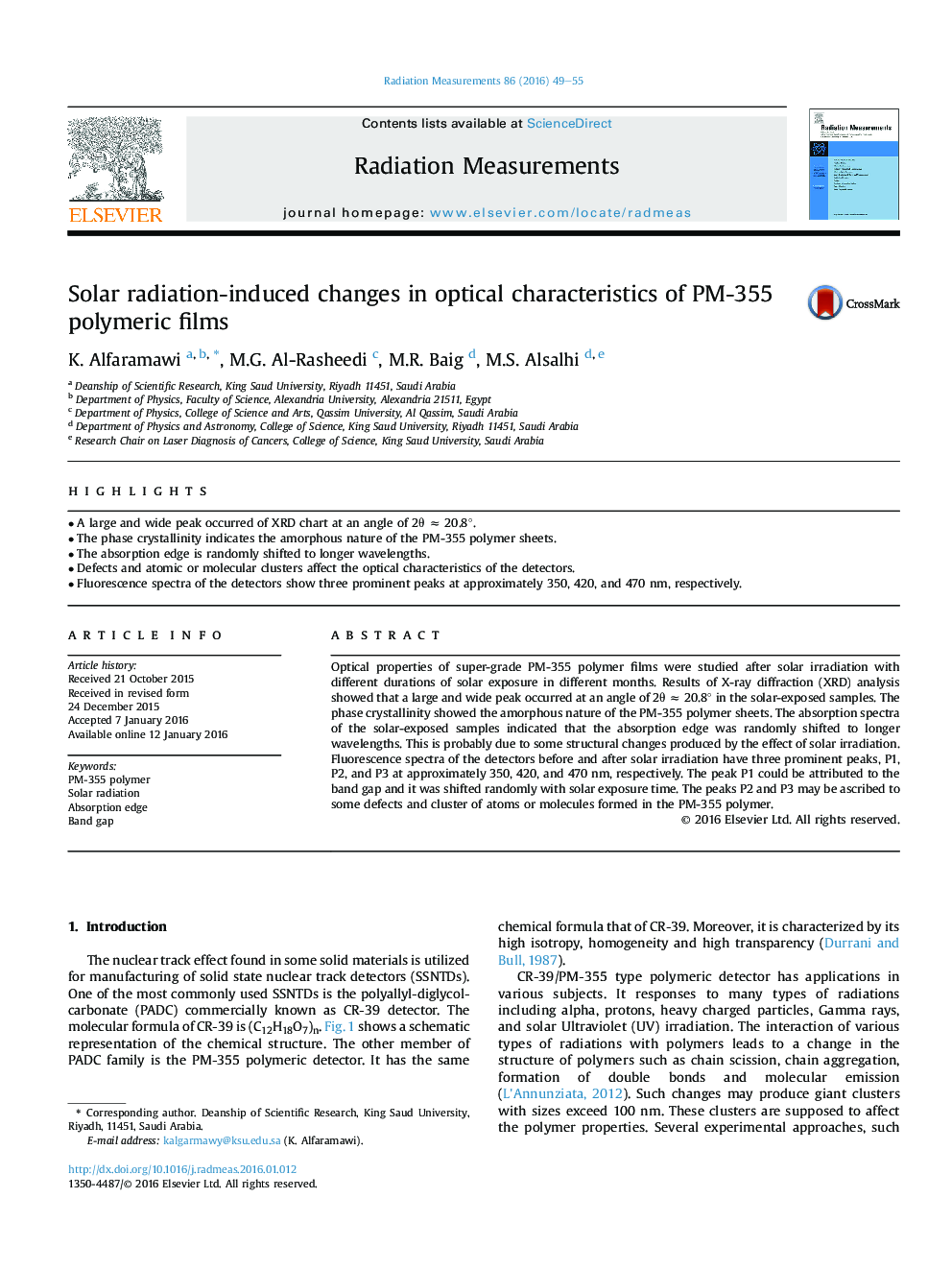| Article ID | Journal | Published Year | Pages | File Type |
|---|---|---|---|---|
| 1884486 | Radiation Measurements | 2016 | 7 Pages |
•A large and wide peak occurred of XRD chart at an angle of 2θ ≈ 20.8°.•The phase crystallinity indicates the amorphous nature of the PM-355 polymer sheets.•The absorption edge is randomly shifted to longer wavelengths.•Defects and atomic or molecular clusters affect the optical characteristics of the detectors.•Fluorescence spectra of the detectors show three prominent peaks at approximately 350, 420, and 470 nm, respectively.
Optical properties of super-grade PM-355 polymer films were studied after solar irradiation with different durations of solar exposure in different months. Results of X-ray diffraction (XRD) analysis showed that a large and wide peak occurred at an angle of 2θ ≈ 20.8° in the solar-exposed samples. The phase crystallinity showed the amorphous nature of the PM-355 polymer sheets. The absorption spectra of the solar-exposed samples indicated that the absorption edge was randomly shifted to longer wavelengths. This is probably due to some structural changes produced by the effect of solar irradiation. Fluorescence spectra of the detectors before and after solar irradiation have three prominent peaks, P1, P2, and P3 at approximately 350, 420, and 470 nm, respectively. The peak P1 could be attributed to the band gap and it was shifted randomly with solar exposure time. The peaks P2 and P3 may be ascribed to some defects and cluster of atoms or molecules formed in the PM-355 polymer.
